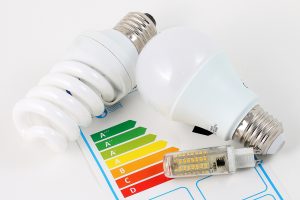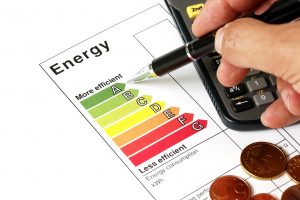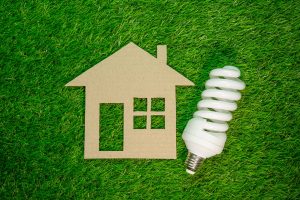Energy Efficient Homes: Be a Part of the Solution
Making your home energy efficient can be achieved in a few easy steps.
Before we recommend ways to make your home energy efficient, let’s look at the kind of lighting that is and can be used.
Incandescent lights: These are your traditional 100W, 60W and 40W bulbs and are highly – in fact, the most – inefficient in terms of energy use. A mere 10% of the energy is actually converted to light, the rest is lost as heat.
Tubelights: They come in a range, T5, T8 and T12, signifying thickness and are indirectly proportional to efficiency, i.e., T12 is least efficient. A T5 (28W) would save you half the energy when compared to a T12 (55W). Sure, T5’s are comparatively expensive but enjoy a longer lifespan. Remember, over time, tubelights dim out.
CFLs: For many years now, CFLs have been considered the most energy efficient. The percentage of energy saved by using CFL over incandescent light is roughly 70%, with a longer lifespan too.
 LEDs: Definitely the latest, and highly recommended, technology in the category of energy-efficient lighting options for your home. With LED, you save 50% more than CFL – that’s a sizeable chunk of your electricity bill too. LED remains unchallenged in giving you a long life of 10 to 25 years and come with solid replacement warrantees that last a decade. Once installed, they are free of maintenance, requiring little or no repairs. Though comparatively more expensive, this is a negligible one-time investment considering the paybacks.
LEDs: Definitely the latest, and highly recommended, technology in the category of energy-efficient lighting options for your home. With LED, you save 50% more than CFL – that’s a sizeable chunk of your electricity bill too. LED remains unchallenged in giving you a long life of 10 to 25 years and come with solid replacement warrantees that last a decade. Once installed, they are free of maintenance, requiring little or no repairs. Though comparatively more expensive, this is a negligible one-time investment considering the paybacks.
Tips to make your home energy efficient:
- LED lighting: Convert to low voltage LED lighting.
- Wear the right clothes: Layer up in the cold and go for loose cotton clothing in the summer so you do not have to depend on external sources to regulate the temperature for you.
- Unplug: Switch off all lights and fans when not in use.
- Standby power: It is a colossal waste to leave your electronic appliances plugged when not in use. Research shows that standby power accounts for more than 10% of a home’s electricity usage.
- Solar energy: This is a sustainable, renewable source of energy. If not 100%, do away with geysers, using solar for your heating needs.
- Refrigerator: It is common for Indian households to have nothing more than curry leaves, curd and milk in the fridge. Be aware of your needs and purchase an aptly sized fridge, not for the sake of fashion, fad or status. Since your fridge remains on always, it ranks very high on energy consumption. Especially, stay away from ones with enormous freezers if you do not have use for them. Keep the fridge door tightly closed at all times If you are a household with two fridges or freezers, switch on the second one on a need-to basis.
 Energy saving consumer goods: These are commonly available. Do your research and make it a habit to consult labels to ensure you are buying an efficient product. Educate yourself about the Energy Star (https://www.energystar.gov/).
Energy saving consumer goods: These are commonly available. Do your research and make it a habit to consult labels to ensure you are buying an efficient product. Educate yourself about the Energy Star (https://www.energystar.gov/).- Air conditioning: This is highly energy inefficient so exercise caution when using. Do not leave the AC permanently on or make a habit out of extreme low temperatures. Summers can get unbearable, but by blindly using the AC, you are guaranteeing the following summer is worse. Remember that placing heat-emitting appliances near ACs – lamps, TV, etc – demand more energy to cool the room; separating them saves energy.
- AC vs fan: Central air conditioning is a total energy guzzler; a central system (2.5 ton) consumes 3500 W! Compare this to a ceiling fan that uses 15W-90W (depending on speed), or a floor fan that consumes 100W even on the maximum speed.
- Shade and insulation: Maintaining green cover by growing a garden and planting trees around your house makes a big difference in managing the microclimate in the summer. For the cold, ensure you are not losing heat through gaps or vents in your home.
 Task lighting: Switch to table lamps and under-the-counter lights as opposed to ceiling lighting wherever possible.
Task lighting: Switch to table lamps and under-the-counter lights as opposed to ceiling lighting wherever possible.- Fix leaks: Always ensure that leaky taps, faucets, etc, are fixed without delay.
- Laundry: Run a full load in the washing machine, stay clear of the hot water option – it is an energy blackhole. As far as possible, sun-dry your laundry.
- Mindset: This is key. Internalize the attitude of sustainability, so this permeates your lifestyle and becomes a priority in decision making. Cost is not the only point of view when purchasing electronic appliances.
- Needs based vs. wants based: Let this be the criteria for your decisions. For example, take shorter showers instead of luxurious ones.
















































